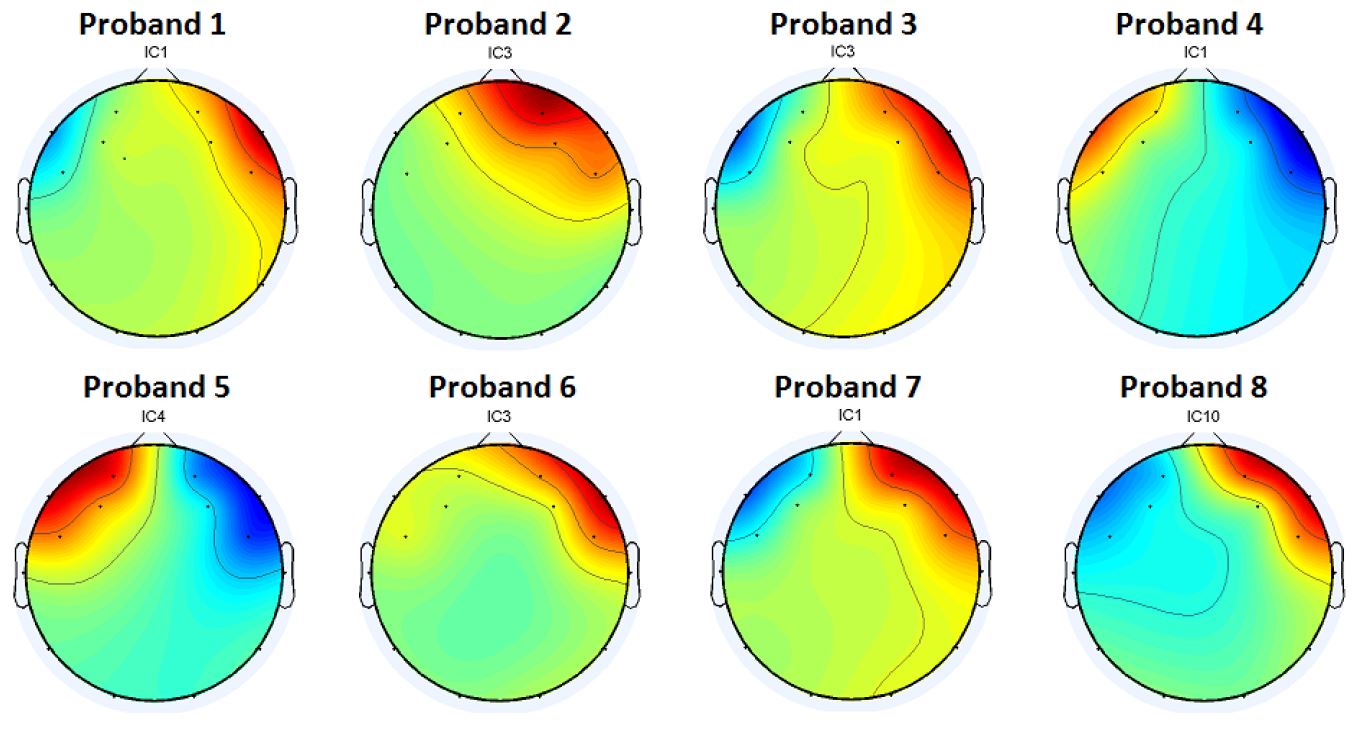During the fourth semester of my bachelor’s degree, I took part in my first project which was called Mind-Machine-Interfaces. I initially joined the project with two other students, but both dropped out early on; either due to the lack of interest or because the professor’s expectations regarding workload were extremly high. Despite that, I decided to continue on my own as I’ve always been fascinated by the brain and how it functions. The project offered me a rare opportunity to explore the intersection of computer science, neurology and signal processing in a hands-on way.
The main idea of the project was to explore how brain-computer interfaces could be enriched by combining EEG data with eye tracking. I used the EPOC EEG headset, a consumer-grade device that records brain activity via 14 channels, mostly located on the scalp’s frontal and temporal regions. The hypothesis was that combining EEG data with eye tracking could help identify patterns of attention and focus shifts. However, I quickly realized that eye movements introduced noticeable artifacts in the EEG signal—particularly on the frontal electrodes. These artifacts significantly interfered with the clean separation of brain signal components, adding a layer of complexity to the analysis.
To address this, I focused on signal processing techniques to reduce noise and isolate meaningful patterns. I applied basic filtering to remove high-frequency noise and slow drifts, followed by Fast Fourier Transforms (FFT) to analyze the frequency components of the EEG signals. This helped identify rhythmic patterns such as alpha or beta waves and understand how they were affected by eye movement. To go further, I used Principal Component Analysis (PCA) to extract dominant components from the data. PCA was especially useful in detecting which channels were most influenced by artifacts and separating them from more stable brain activity. While these techniques didn’t fully eliminate noise, they provided a clearer view of the underlying structure in the data and made it easier to distinguish cognitive signals from interference.
Looking back, my first project was one of the most technical, stimulating and challenging parts of my early studies. I conducted my first simple user study with eigth participants, learned how to use Matlab and spent hours evaluating and writing an extremly long project report. It taught me a lot about the challenges of working with real-world biometric data and how easily external factors can interfere with brain signal interpretation. While I didn’t manage to create a fully functional hybrid attention-measurement system, I gained valuable insights into EEG signal processing (such as FFT and PCA) and the limitations of consumer hardware. More importantly, however, the project left me with a lasting interest in neurotechnology and human-machine interaction, which still influences my thinking about interfaces today.
In everyday life, everyone has to make countless decisions. From a psychological perspective, many of these decisions can be justified in retrospect and in some cases can even be predicted with a high degree of certainty. In neurology, on the other hand, the investigation of decision-making processes is much more complex; even recording brain activity during decision-making poses a number of problems for scientists. Even the question of whether a person is consciously or unconsciously looking at a point is difficult to answer.
Cognitive science is trying to gain more information about decision-making processes, perception and attention with the help of various methods, such as positron emission tomography and magnetic resonance imaging. However, the temporal resolution of many of these measurement methods is limited and the measuring devices often restrict the natural behavior of the test subjects during the experiments.
This documentation deals with electroencephalography and the measurement of brain waves that can be traced back to visual attention and decisions. It was created as part of the semester project “Mind Machine Interfaces” of the Computer Science and Media course (B.Sc). The aim of the work was to determine the requirements for measuring visual attention and to apply and test known methods of signal analysis. One focus of this work was to analyze interfering signals.– Ephraim Schott, in his first project documentation ever.
